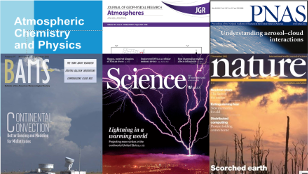
Research Highlights
Thank you for checking in! New content will be shared here soon.

Upcoming Meetings
Asia Oceania Geosciences Society 22nd Annual Meeting
27 July 2025 - 1 August 2025
Asia Oceania Geosciences Society (AOGS) was established in 2003 to promote geosciences and its [...] Read more
Atmospheric Chemistry Gordon Research Conference
3 August 2025 - 8 August 2025
The Atmospheric Chemistry Gordon Research Conference (GRC) is a premier, international scientific [...] Read more
AMS 41st International Conference on Radar Meteorology
25 August 2025 - 29 August 2025
The 41st International Conference on Radar Meteorology is organized by the American Meteorological [...] Read more


